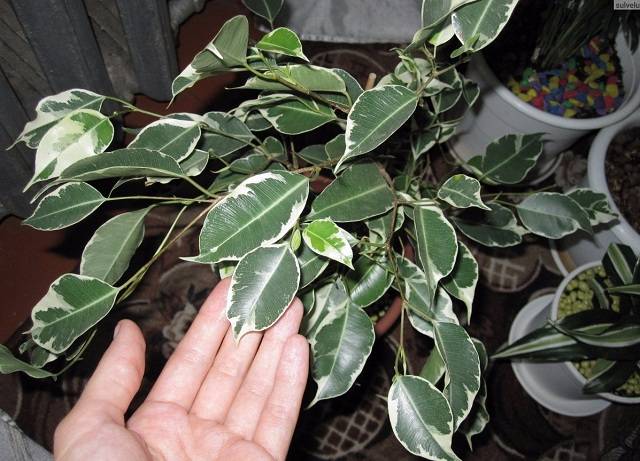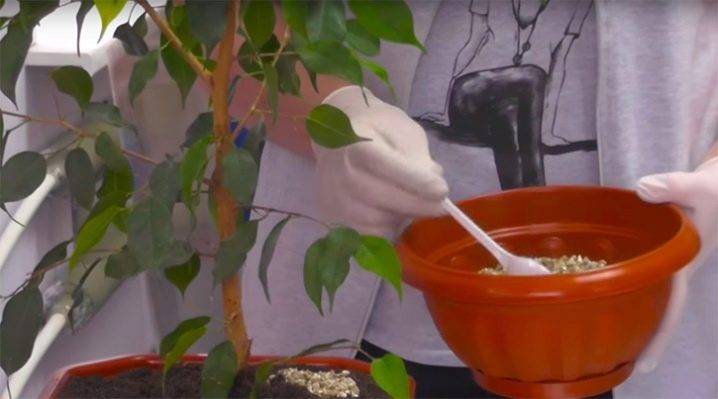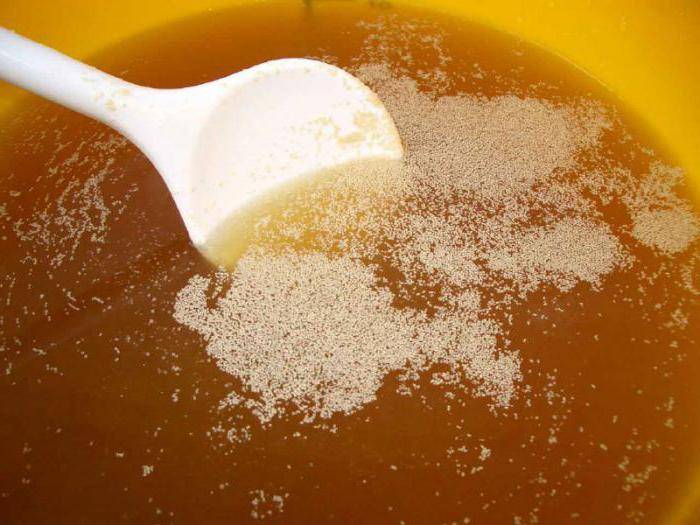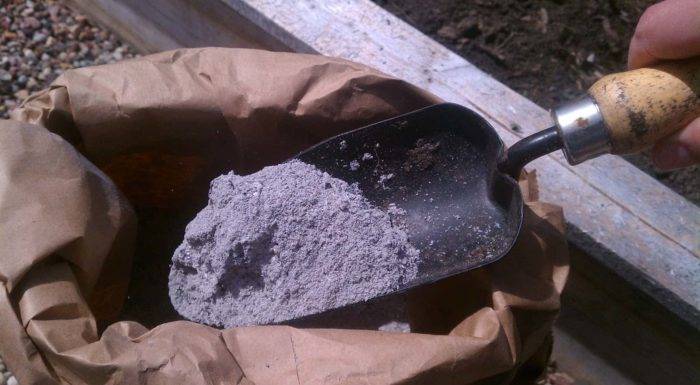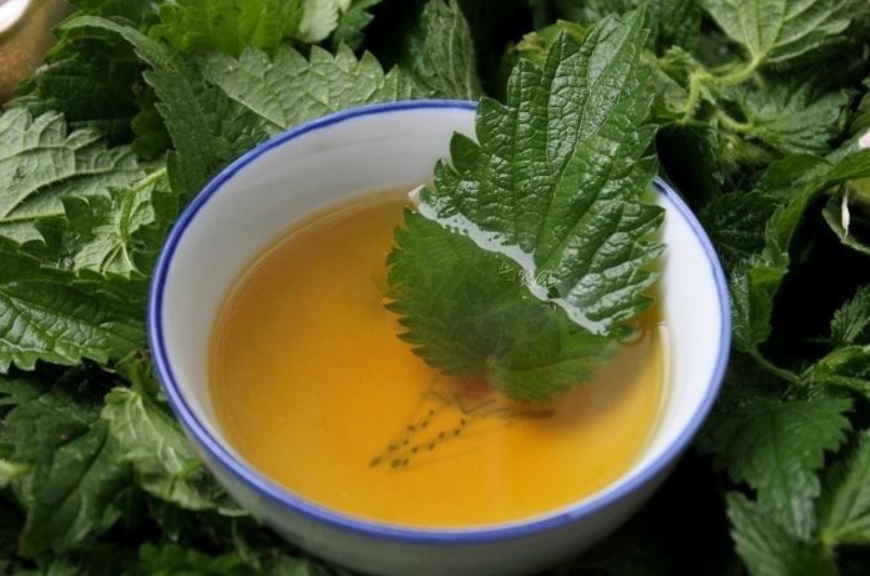How to feed Benjamin's ficus at home
Content:
Ficus Benjamina is an ornamental houseplant. This flower is distinguished by its undemanding growing conditions, thanks to which it has earned the love of many gardeners. But to maintain its decorative qualities, ficus needs regular and nutritious nutrition. Understanding what is the best way to feed the ficus and how to do it correctly will help maintain the beauty and health of the plant for a long time.
What elements does Ficus Benjamin need?
What do you need to fertilize ficus at home? In order for a flower to grow and develop correctly, it needs 13 of the most micro and macro elements. The main amount of nutrition falls on nitrogen, since it is he who is responsible for the rapid growth of green mass and the maintenance of the rich color of the leaves. Nitrogen also takes an active part in the processes of photosynthesis.
In addition to nitrogen, ficus needs phosphorus, as it affects the active growth of the root system, the balanced effect of organic fertilizers and an increase in disease resistance. Ficus also needs potassium, which helps reduce susceptibility to temporary droughts. In addition, the plant needs calcium, as it is part of the cell membranes and takes part in all metabolic processes.
In a smaller amount, the ficus needs elements such as:
- magnesium;
- manganese;
- sulfur;
- iron;
- zinc;
- copper;
- molybdenum;
- cobalt;
- boron
The plant nutrition area is limited by the volume of the pot. If the substances necessary for the growth in the soil are absent or there are very few of them, the following signs appear:
- the growth of the stem and leaves slows down or stops;
- the stems become thinner and strongly elongated;
- leaves become pale, yellow spots appear on them, and they begin to fall off;
- the flower dries up, begins to turn yellow, leaves wither and die off, a loss of their elasticity occurs;
- due to the reduced work of the immune system, the susceptibility to diseases increases;
- pests attack the plant.
General rules for fertilization
Ficus is a representative of decorative deciduous indoor plants, therefore, for feeding, it is worth using only those products that are intended specifically for such flowers.
It is important not only to understand how to feed the ficus, but also to adhere to certain rules:
- it is better to apply fertilizers simultaneously with watering, dissolving the agent well in water, this will help prevent burns on the root system;
- it is better to apply mineral complexes and organic matter alternately, with an interval of at least seven days;
- when applying fertilizers, it is important to ensure that the liquid does not get on the leaves and growth buds;
- on complex mixtures, dosages are indicated, which are very important to observe.
Fertilizers and feeding for growth
Ficus is intensively fertilized during the period of active growth - in spring and summer. How to fertilize ficus? The flower needs both mineral elements and organic matter. The use of each type of fertilizer has its own characteristics.
In the summer, the plant needs a large amount of organic matter, since it increases the growth of green mass and is responsible for the saturation of the color of the leaves. Also, such a fertilizer is suitable for the rehabilitation of a damaged plant.
Mineral dressings are:
- dry. Powdered or granular types, as well as in the form of tablets. They give up their nutrients gradually, during each watering a small amount of them gets into the soil;
- liquid. Such mineral complexes are used to feed the plant through the roots. They can also be added to the water when spraying;
- in the form of delayed-action capsules. They are laid in the ground directly under the roots of the plant. During watering, the capsules will slowly dissolve and help fertilize the soil with nutrients.
The organic fertilizers for Benjamin Ficus that are most commonly used are described below.
Chicken droppings
This concentrated organic matter contains a lot of nitrogen, which the ficus needs for active growth. To prepare the fertilizer, you need to take 5 g of rotted chicken manure and 1 liter of cold water. The droppings are stirred in water and, after abundant watering, the rubber-bearing ficus is fed with this liquid.
Overripe mullein
Take 2 g of mullein and dilute in 1 liter of water. The plant is fed with this liquid only after abundant watering.
Humus
Overripe leaves are crushed and added in 1 tbsp. spoon in each flower pot. You can also add this fertilizer to the soil during plant transplantation. The earth is mixed with humus in a ratio of 1: 3.
An approximate fertilization schedule for ficus is indicated in the table.
Top dressing table:
| Period | Feeding frequency |
| March, April | Once every 30 days |
| May | Every 20 days |
| June July August September | Once every two weeks |
Fertilization errors and their consequences
Applying too much fertilizer is bad for the development of the indoor plant. The harm manifests itself in the form of a burn of the root system or a weakening of the flower. Also, the introduction of an excessive amount of fertilizer provokes the shedding of foliage and the appearance of white bloom on the soil.
If the plant is not fed for a long time, the soil in the pot is depleted, the plant begins to wither, dry out and shed its leaves.
If in winter, when the ficus is dormant, it is fed with organic fertilizer, then in the absence of vegetative processes, the root system will begin to rot and the plant will die. Therefore, any top dressing should be applied only at the stage of active growing season - from March to September.
Folk fertilization methods
How to feed Benjamin's ficus at home? In addition to ready-made complex fertilizers, which are sold in the store, folk remedies can be used to fertilize the ficus. They can be easily prepared at home.
Sugar
This product is considered the most popular among other natural ingredients, as it contains a large amount of glucose. When using sugar as a fertilizer, it is poured onto the surface of the soil in a pot and poured over with warm water. For one flower pot, you only need 1 teaspoon of sugar.
Dry yeast
Feeding ficus with yeast increases the work of soil microorganisms, which has a beneficial effect on the plant at the time of active growth.To prepare the nutrient mixture, take 1 tbsp. a spoonful of dry yeast and diluted in 10 liters of warm water.
Wood ash
This fertilizer contains a large amount of phosphorus and potassium. It is these substances that are necessary for good growth of the ficus. Ash is poured over the soil in a ficus pot. You can also prepare a liquid solution. To do this, take 1 tbsp. a spoonful of ash and pour 1 liter of hot water. Insist 7 days, shaking daily.
Coffee
Coffee grounds are often used as a natural fertilizer for ficus. Since it contains many useful substances that normalize the general condition of the flower, improve the structure of the soil, and provide oxygen access to the root system of the plant. To prepare the fertilizer, the thick is dried and added to the soil.
Nettle infusion
Take 50 g of fresh or 10 g of dried nettle, put in a jar, pour boiling water (0.5 l), close the container with a lid and insist for two weeks. Before use, filter and dilute with water in a ratio of 1: 5.
Banana peel
Ficus reacts remarkably to the banana peel, which contains a huge amount of nutrients. The banana peel must be dried, placed in a liter jar, covered with boiling water and insisted for 24 hours, drain. You need to use the liquid for watering the ficus once every two weeks.
Using any of these remedies, you can get excellent results. The main thing is to adhere to certain proportions and introduce natural ingredients with the correct regularity, and then the ficus will decorate the house for a long time.

